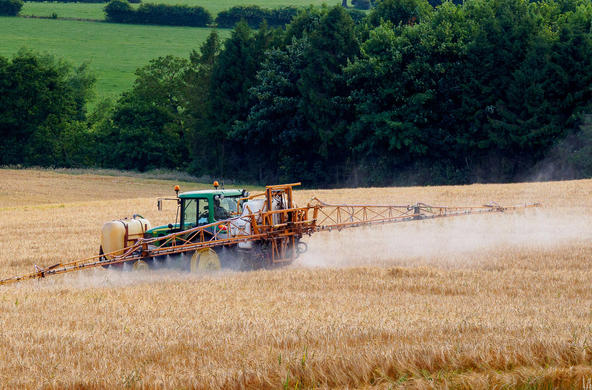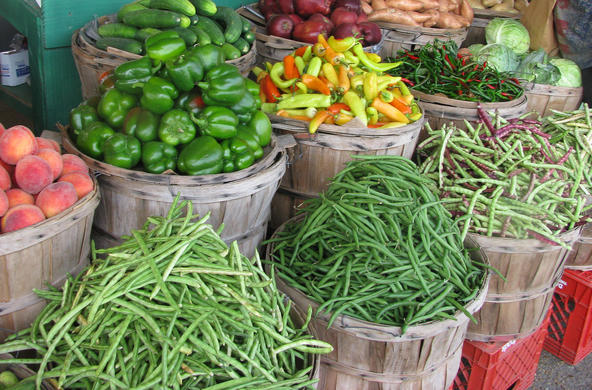It might seem that it would be easy to calculate the energy used to produce your nightly cocktail, by dividing the energy use in the production facility by the output (in liters) of product. Unfortunately, that calculation is too simple. The energy used to produce a bottle of zinfandel must also include the energy used in the vineyard that produced the grapes. The energy in a dram of aged bourbon must include the energy used to grow the corn that was fermented. Energy use on the farm includes the energy used to manufacture any nitrogen fertilizer or pesticides that were applied, energy used to pump irrigation water, and energy used in the diesel fuel that powered various pieces of farm machinery.
Where your drink originates and how it is packaged also have impacts. More than half of the energy used to produce chianti in Italy is consumed in the bottling, packaging, and shipping that bring it to the glass on your table. If you live in the United States, there is no doubt that these costs are lower for bourbon produced in Kentucky than for Scotch shipped across the ocean from Scotland. The energy in bottling is lower for hard liquor because the amount of alcohol in each bottle is much larger.
There are only a few studies that have completed a full life cycle analysis for beer, wine, and distilled spirits. For the latter, I rely heavily on energy analyses that were published to evaluate the potential benefits of using ethanol instead of gasoline to power automobiles.
A full life-cycle analysis for Australian wine indicates that 21 megajoules (MJ) of energy, emitting 1.25 kg of carbon dioxide, are expended to produce a 750 ml bottle that is shipped to Europe or the United States. Water use, largely to grow the grapes, is about 363 liters per bottle. White wine from Italy has about the same impact (1.01 kg CO2 per 750 ml bottle).
One life-cycle analysis indicates that consuming a 12-oz. beer (0.33 liters) has about the same energy and carbon impact on the environment as consuming 1 glass of wine (0.15 liters), which has about the same amount of ethanol.
The energy expended to produce hard liquor is generally smaller. For scotch whiskey, the energy used is about 15 MJ per liter of pure ethanol (200 proof). If we assume that the energy use to produce the glass bottle, the packaging, and shipping amounts to about 50% of the total environmental impact, then a 750-ml bottle with 40 percent alcohol, represents 9.0 MJ. Thus, it would take 0.60 MJ of energy to deliver a shot of Scotch from the wheat field to your glass—about the same amount of energy it takes to drive your car an eighth of a mile. For bourbon, the energy use is somewhat higher, due to the energy expended to grow corn, totaling about 0.90 MJ per drink. Of course, in the United States, bourbon is not shipped as far as scotch.
All these calculations may be different if your cocktail is a biodynamic, organic wine or if your bourbon is produced from corn grown on a farm using draft animals rather than tractors. And, the environmental impact of your evening drink largely depends on how much you drink. Nevertheless, it would appear that the energy expended to deliver a mixed drink is about three to four times lower than a glass of wine.
References
Amienyo, D., C. Camilien, and A. Azapagic. 2014. Environmental impacts of consumption of Australian red wine in the UK. Journal of Cleaner Production 72: 110-119.
Dias de Oliveira, M.E., B.E. Vaugh, and E.J. Rykiel. 2005. Ethanol as a fuel: energy, carbon dioxide balances, and ecological footprint. Bioscience 55: 593-602.
Fusi, A., R. Guidetti, and G. Benedetto. 2014. Delving into the environmental aspect of a Sardinian white wine: from Partial to total life cycle assessment. Science of the Total Environment 472: 989-1000.
Hill, J., E. Nelson, D. Tilman, S. Polasky, and D. Tiffany. 2006. Environmental, economic, and energetic costs and benefits of biodiesel and ethanol biofuels. Proceedings of the National Academy of Sciences 103: 11206-11210.
Mattila, T., P. Leskinen, S. Soimakallio, and S. Sironen. 2012. Uncertainty in environmentally conscious decision making: beer or wine? International Journal of Life Cycle Assessment 17: 696-705.
Roy, P. and A. Dutta. 2012. Life cycle assessment of ethanol produced from wheat straw. Journal of Biobased Materials and Bioenergy 8: 2012-2019.






